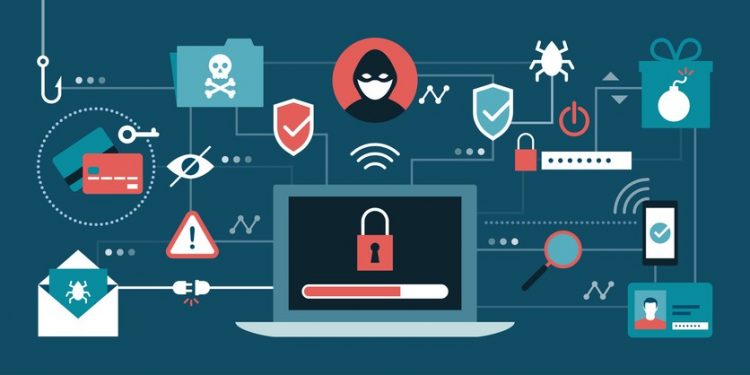Do you know 2021 had the highest average cost of data breaches till now?
According to the report, Data breach costs rose from the US $3.86 million to the US $4.24 million. This is the highest average total cost in the 17-year history of this report.
Since the advent of state-sponsored attacks by collaborative teams of individuals, cybersecurity has rapidly become one of the most significant risks to organizations. Typically, cyber-attacks have focused on IT and Operational Technology hardware and software infrastructure. For example, breaking through firewalls exploits operating systems and application software vulnerabilities.
To protect against such ever-changing nature of cyberattacks needs solid strategies, methods, and safeguards against known attacks and threats. For this, organizations and businesses need to take appropriate measures and defenses before cyber-attacks occur. A cybersecurity maturity model is an approach that is a compelling first step to determining the proper level of security required against cyber-attacks.
Now, we’re moving ahead, and let’s get started with what we mean by the cybersecurity maturity model.
What is the Cybersecurity Maturity Model?
A cybersecurity maturity model provides an advancing way and enables organizations to assess where it is along that path periodically. It is recognized as a valuable tool in the context of improving your cybersecurity efforts and communicating with upper management, plus getting the required support.
Fundamentally, it is a framework for measuring the maturity of a security program and guidance on how to reach the next level. For instance, it can tell you whether your way is for a particular domain that best can be described as a crawl, walk or run, how fast one is going and what needs to do to progress from one stage to another in a more sophisticated manner.
Several maturity models are available from which one can choose. According to the report, the cybersecurity capability maturity model (C2M2) and the National Institute of Standards and Technology cybersecurity framework (NIST CSF) are two modes that cover everything in cybersecurity.
C2M2
The United States Department of Energy developed it for usage by power & utility companies. Businesses of any field can use this to measure the maturity of their cyber security capabilities. This maturity model consists of ten domains, which are:
- Risk Management
- Asset, Change, and Configuration Management
- Identity and Access Management
- Threat and Vulnerability Management
- Situational awareness
- Information sharing and communications
- Event and incident response
- Continuity of operations
- Supply chain and external dependencies management
- Workforce management and cybersecurity program management
NIST CSF
It is different from C2M2 since NIST does not mean the CSF is a maturity model. Rather than ten domains, NIST CSF represents five cybersecurity functions: identity, protect, detect, respond, and recover. Moreover, CSF’s parent documentation is the C2M2.
What are Maturity Models?
Since 1986, Maturity models have been used in software engineering. Fundamentally, the Capability Maturity Model (CMM) was developed to assess U.S. Department of Defense contractors’ process maturity in terms of –
- How they deliver a successful software project’ the higher the maturity score.
- What about the processes and the higher likelihood they use established processes for the design, development, quality assurance (testing), and building of software.
SCMM (Security Capability Maturity Model)
ITIL (Information Technology Infrastructure Library) Maturity Levels measure security capability maturity and assign numbered levels. Every organization cycles through five governance domains, identify, protect, detect, and respond.
In general, the description of maturity levels can change over time; however, maturity levels will remain the same. So then, it became the Cybersecurity Capability Maturity Model (SCMM). Every domain has a description in terms of activities and processes. This way, organizations typically follow at various levels of maturity. There are five levels of maturity models, which are:
LEVEL 1: Initial/start: There are no security controls, documented processes, and security controls. Communication is normal; however, security leadership has been established.
LEVEL 2: Repeatable/developing: This level includes repeatable, documented processes and security controls.
LEVEL 3: Defined: Processes are becoming more formalized and standardized at this level. More controls are being documented.
LEVEL 4: Managed: Roles and responsibilities are clearly defined in this. Controls and processes are being monitored and measured for compliance and continuous improvements but are unevenly distributed.
LEVEL 5: Optimized: In level 5, security is fully integrated into the organization’s fabric. It includes continuous improvement of security skills, and risk-based processes are automatically and comprehensively implemented, documented, and optimized.
How Does Process Maturity Model Work?
The security model helps organizations in many ways. It improves over time and provides crucial visibility into their ability to manage cyber risk effectively. It works in various forms and is customized to the organization to exemplify best practices and establish security standards. Basically, the security maturity models are used to help the organizations benchmark their strengths and weaknesses against commonly held best practices and capabilities.
The process maturity models enable organizations to assess key process areas (KPAs) or practices in various domains, which are considered to be essential to a mature cyber security strategy. For instance, C2M2 evaluates KPAs in the following:
- Risk management
- Identify & access management
- Threat & vulnerability management
- Situational awareness
- Asset, change & configuration management
- Information sharing & communication
- Workforce management
- Cybersecurity program management
- Supply chain & external dependencies management
Accelerating Cybersecurity Strategy
After the establishment of maturity, businesses should start to create strategies in order to enhance their cybersecurity maturity. All they can do is take a holistic approach. For instance, they should know how and where they are required to invest in terms of time and resources. This way, they can achieve it without hassle.
In addition, a cybersecurity roadmap must include three elements for a successful organizational transformation: people, process, and technology. However, if you neglect one or two, it could lead to vulnerabilities in the cybersecurity environment.
- If organizations deal with the complexity of building and scaling a mature security program, they must look at security consulting and outsourcing providers. This way, they will get a customized approach to their business.
- All you need is a security outsourcing provider who knows every facet of your business. Providers must be experts in security intelligence, compliance, regulatory requirements, and threat detection & response.
- Organizations also need an experienced cyber security partner to reach the security maturity levels expected.
To Sum Up
It’s worth noting that cyber security is a long road, which requires organizations to focus and cultivate their people, processes, and technologies to protect their assets best. Most importantly, the cyber security maturity model gives a path forward and enables organizations to assess where they are along that path periodically. It’s also a great way to measure and improve an organization’s security capabilities and processes, but it all needs continuous management and attention to be effective.
Want to share your thoughts with us? You can drop your comments below.
About the Author: Hardik Shah is a Tech Consultant at Simform, a firm that provides software testing services. He leads large-scale mobility programs that cover platforms, solutions, governance, standardization, and best practices.
Follow Techdee for more!




